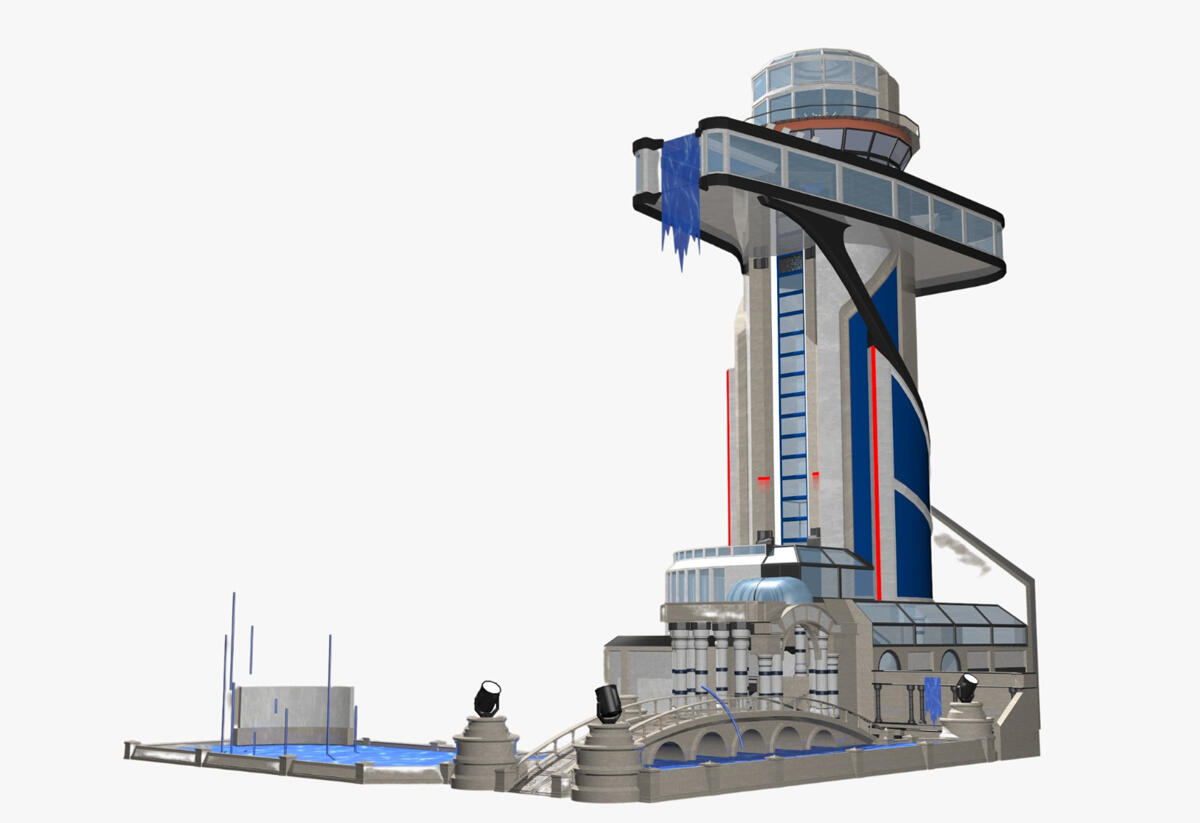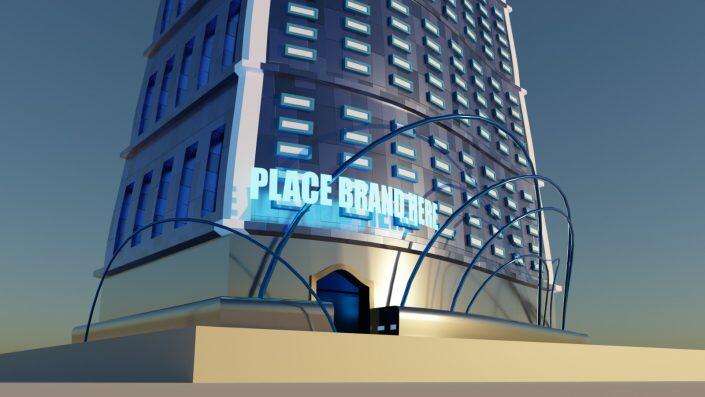Trending
Invisible cities: What metaverse developers are building
A look at some of notable projects and players in the brave new world of virtual real estate

Two homes for the price of one — that was Gabe Sierra’s pitch to the family real estate business.
South Florida-based Sierra Development would build a luxury home in Miami and a one-to-one replica in a virtual world, then auction them off as a package.
The idea was that the buyer would maintain complementary lives in both — a regular life in his brick-and-mortar home and a jet-setting digital version in the other, hosting virtual gatherings with pals from around the world and “teleporting” to others in far-flung reaches of the metaverse.
Sierra was convincing. Later this year or early next, the company will auction the nine-bedroom, 11,000-square-foot Miami mansion, which it says is under construction at an undisclosed location, together with its “digital twin“ in a popular metaverse called The Sandbox. The company and ONE Sotheby International Realty, the listing agent, expect this “MetaReal” duo to fetch eight figures.
“I don’t think that everybody necessarily believes in it, or gets it,” said ONE Sotheby’s president Daniel de la Vega. “But the technology is moving very fast.”
Sierra won’t stop there. His new sister company, Meta Residence, has acquired the equivalent of about 40 acres in The Sandbox for additional homes and other potential projects, including condos and commercial space. It’s a bet that the material world and the metaverse will converge to create a new economic sphere.
Some big names in commercial real estate, including Jamestown’s Michael Phillips, already see the business evolving that way. On New Year’s Eve, Jamestown hosted a virtual ball drop at a digital twin of its 26-story New York City tower One Times Square.
“The future of real estate is the thoughtful integration of the virtual and physical worlds, optimized for user experience, ” Phillips said.
Dirt to digs
Interest in the metaverse, whose origins date back to the early days of video games, grew exponentially during the pandemic as people sought escape from the isolation of lockdown. In a sense it was a revival; a virtual world called Second Life made waves in the early 2000s before fading away. (The platform is staging a comeback amid the renewed interest).
Expectations of a horde of new users sparked a digital land grab last year in dominant metaverses like Decentraland and The Sandbox, where real estate is, in one sense, finite — and now quite expensive. In November, Republic Realm, which develops in virtual worlds, shelled out a record $4.3 million for space in The Sandbox. Digital land sales overall surpassed $500 million in January.

Facebook’s rebrand last fall as Meta, further fueled hype over the technology’s commercial possibilities. Public opinion about the metaverse has polarized in the months since — it is either an absurd escapist fantasy or a marvelous new social and business opportunity, depending on whom you ask. Brendan Wallace, co-founder of proptech-focused venture capital firm Fifth Wall, has called it “enticing,” but remains unconvinced.
“It’s new. It’s cool,” Wallace told TechCrunch in a recent interview. “But I would not say that we have fully leaned into investing in it yet, because there are so many more pressing and, we think, more interesting real world problems that we have yet to solve.”
Recent activity suggests the technology might be on the cusp of the mainstream. Walmart, Adidas, Nike, Gucci, Disney and Warner Music, among others, have planted flags in the metaverse in the last few months, with plans to develop virtual storefronts, offices and entertainment venues. While the commercial prospects are unproven — no one is collecting rents yet, and there is no telling if virtual offices and storefronts will take off — many see it, at the very least, as a branding opportunity.
Among believers there is a conviction that virtual reality today is about where the internet was at the turn of the century.
“Everybody wanted a website, everybody wanted to be on the internet,” George Bileca of Voxel Architects, a metaverse design firm, said. “The metaverse is the natural evolution of websites.”
Now, everybody seems to want a piece. In February, JPMorgan, which has described the metaverse as a potential $1 trillion-a-year opportunity, opened a lounge-office in a mall in Decentraland.
McDonald’s, a major real estate player in its own right — the fast-food chain owns nearly $30 billion of real property worldwide — recently filed a trademark application for a virtual restaurant, which analysts say could serve as a hub for ordering home delivery.
Uncanny architecture
The explosion of interest has generated high demand for metaverse designers and builders. One doesn’t necessarily need to know how to code. Many, like Voxel’s Bileca, have a background in traditional architecture. The best builders also have some experience designing games, he said.
“Architects are really good at planning and understanding how people move through buildings, but concept artists are the ones able to be super creative here,” Bileca said.
A new project begins like any design process, with an exploratory meeting about scale and style. Reference pictures of real buildings are reviewed. Some want to borrow elements from the work of starchitects like Mies van der Rohe and Frank Gehry. Costs for larger, more complex projects — a bespoke office building, for example — can reach as high as a few hundred thousand dollars.

A rendering of virtual office property for an undisclosed client. (Metaverse Architects)
Many early adopters have focused on creating “relatable” structures that resemble real-life ones, Bileca said.
“They want to be sure that the building represents their brand identity,” he said.
Auction house Sotheby’s wanted precise re-creations of their real world real estate — in its case, its London office — but have been willing to experiment with interior design to “show that many more things are possible in the metaverse,” Bileca said. Sotheby’s made the second level of its metaverse headquarters, where it showcases NFTs from the popular Bored Ape Yacht Club collection, a swamp.
Because the metaverse is unbounded by gravity and other fundamental rules of the material world, there is room to go wild. Media and entertainment companies, which are already hosting virtual concerts for the likes of ABBA and Metallica, experimented from the start, according to Fatemeh Monfared, founder of Spaces, a metaverse architecture startup.
One venue build-out, called Whirlpool Galaxy, looks like a landscape from the Jetsons, “with water and rocks mixed among flying platforms and neon lights,” according to a description on Spaces’ website.
“It’s the responsibility of the designer to help the client realize what is possible,” Monfared said.
The tower that will be the tallest in Decentraland — at 155 meters, it will rise above Jamestown’s One Times Square when it is finished — has a “sci-fi Babylon tower” vibe, according to Luca Arrigo, co-founder of Metaverse Architects, the firm that designed it for cryptocurrency company Airdrop.com.
“The client said to us, ’Do whatever you want,’” Arrigo said. “’Build something crazy and go for it.’“
It’s unclear what Airdrop.com will use the space for, but utility may not be the point.
”When you break a record of having the tallest tower,” Arrigo said, ”it makes some good PR.”




